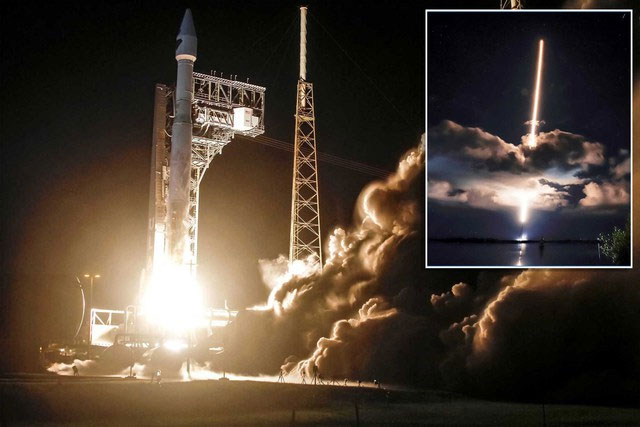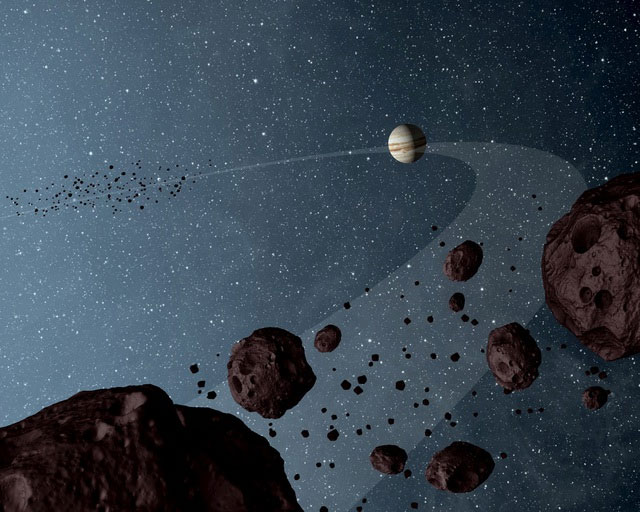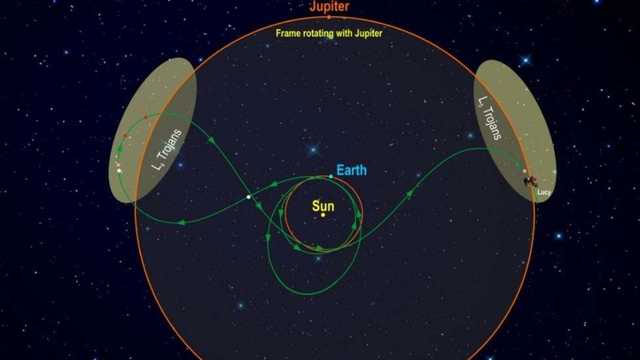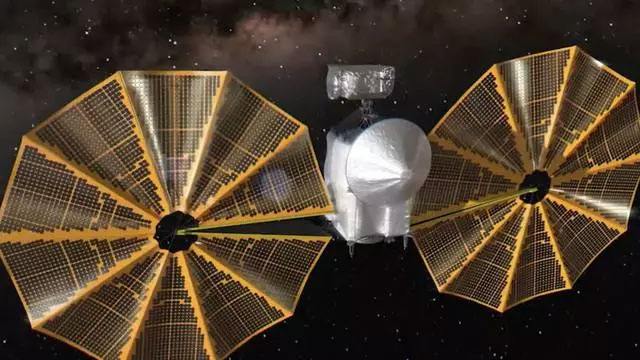Lucy successfully embarked on a long journey on October 16, 2021. Along the way, it will spend 12 years exploring alone in the dark and deep space.
“Lucy” is the name given by a group of scientists to an ancient human ancestor fossil excavated in 1974, whose skeleton provides crucial insights into the evolutionary history of humankind. “Lucy” is also the name of a spacecraft developed and launched by the National Aeronautics and Space Administration (NASA) that has traveled a long distance to explore the Trojan asteroids orbiting Jupiter.
Its mission is to investigate the origins of the Sun and planets like Earth, while also providing clues about the evolutionary history of the Sun within a larger framework, thus serving a role similar to that of the fossil skeleton “Lucy.”

The mission of Lucy is to search for the “time capsule” of the Sun.
Lucy successfully embarked on a long journey on October 16, 2021. Along the way, it will spend 12 years exploring alone in the dark and deep space. According to NASA, its mission is to search for the “time capsule” of the Solar System.
The Trojan Asteroid Group
The asteroids were first discovered in orbit around Jupiter, where they reside at the Lagrangian points of Jupiter. The so-called Lagrangian points are gravitational balance points between the Sun and a planet. Each planet has five Lagrangian points, designated as L1 through L5. Among these, L1 through L3 are located along the line connecting the two celestial bodies, while L4 and L5 are situated 60 degrees ahead and behind the planet’s orbit.
As early as 1904, astronomers may have observed a few Trojan asteroids in Jupiter’s orbit, but they went unnoticed at the time and were not recorded. Since then, more and more asteroids have been discovered at the Sun-Jupiter Lagrangian points L4 and L5.
The Trojan asteroid group of Jupiter is primarily distributed at its L4 and L5 points, positioned symmetrically 60 degrees ahead and behind Jupiter’s orbit. As of September 2007, 2,239 Trojan asteroids of Jupiter have been confirmed, with 1,192 at L4 and 1,047 at L5.

These are primarily leftover asteroids from the formation of the Sun.
The Trojan asteroids are named after Greek gods and goddesses. These are primarily leftover asteroids from the formation of the Sun. According to NASA, there are two groups of Trojan asteroids orbiting the Sun alongside Jupiter, one group leading ahead of Jupiter and another group trailing behind – meaning that Jupiter is situated between the two groups on its path.
With deeper observations, astronomers have found that the phenomenon of Trojan asteroid groups is not exclusive to Jupiter. Earth has also discovered two such asteroids, one discovered in 2011, named 2010 TK7; the other recently discovered is called 2020 XL5, both located at the L4 position of the Sun-Earth Lagrangian point.

The Trojan asteroids of Jupiter are primarily distributed at its L4 and L5 points.
Why are Trojan Asteroids the “Time Capsules” of the Sun?
All planetary systems are born around stars, and the birth of stars originates from the contraction of massive nebula clusters (cosmic dust), resulting in the formation of one or more stars in the core, while the remaining debris coalesces into planets and various small celestial bodies.
Scientific research suggests that Trojan asteroids are leftover fragments from the formation of large planets and may serve as the basis for the formation of planetary satellites. Because the orbits of these asteroids or satellites can be disrupted and unstable, they may pose a threat to planets. Some scientists believe that a planet the size of Mars crashing into Earth 4.5 billion years ago may have been hidden at the Lagrangian point of Earth’s orbit and collided with Earth due to orbital disturbances.

The Lucy spacecraft is an asteroid probe developed by NASA.
Scientists refer to the planet that collided with Earth as “Theia.” It caused Earth’s axis to tilt, forming an angle of 23.44 degrees, which gives Earth its distinct seasons throughout the year. The debris and material ejected into space after the impact condensed to form the Moon, resulting in larger tides on Earth.
Therefore, scientists believe that these Trojan asteroids are products of the Sun and planets’ formation process, or in other words, they are the “earliest fossils” of the Sun, “time capsules” of the Sun. Deep analysis and understanding of such “time capsules” will allow us to gain deeper insights into the past and present of the Sun.
As a result, Lucy was born, carrying the important mission of humanity to explore the Sun, where Earth and humankind came from, and where we will go in the future. Of course, this type of exploration is just a small piece of the overall puzzle of exploring the universe and nature. In the future, only by piecing together all the small fragments from thousands of explorations can we answer the questions that currently remain unanswered.
Specific Mission of Lucy
The Lucy spacecraft is an asteroid probe developed by NASA. Its primary mission is to investigate the Trojan asteroid group of Jupiter. The total investment for this mission amounts to $981 million, which may sound like a lot, but in reality, it is dubbed the “most cost-effective” mission in NASA’s history.
This is because Lucy’s mission is quite demanding; unlike previous asteroid probes that only needed to detect one or two asteroids, it must consecutively examine 8 asteroids. In this way, the cost per asteroid is just over $100 million, making it the cheapest interstellar exploration in history.

Lucy is equipped with two gigantic circular solar panels, with a total width of 14.25m.
The height of the Lucy probe is about 5 meters, with a launch weight of approximately 1,550 kg and a dry weight of 821 kg. Lucy is equipped with two gigantic circular solar panels, with a total width of 14.25 meters and an effective area of 51 square meters when deployed. The solar panels can receive 500 watts of power in the dim sunlight of Jupiter’s orbit, while Lucy only requires 82 watts to meet all its normal needs.
During its 12-year mission, Lucy will accelerate through Earth’s gravitational assist effect three times – the spacecraft will return to Earth’s orbit three times to gain gravitational support for acceleration and proper trajectory, ultimately reaching a speed of 560,000 km per hour to enter Jupiter’s orbit and drill into the Trojan asteroid group of Jupiter.

After the second flyby for acceleration, Lucy will head directly to Jupiter’s orbit.
The timing of each acceleration flyby:
- The first in October 2022.
- The second in December 2024.
- The third in December 2039.
In fact, after the second flyby for acceleration, Lucy will head directly to Jupiter’s orbit. In April 2025, Lucy will conduct its first asteroid exploration mission on the way to Jupiter’s orbit.
This asteroid is called Polymele, which is not a Trojan asteroid in Jupiter’s orbit, but a member of the main asteroid belt located between the orbits of Mars and Jupiter.
Lucy was launched into space from the coast of Florida, USA, using an Atlas V 401 rocket at 5:34 AM on October 16, Eastern Time (16:34 on October 16, Vietnam Time).





















































